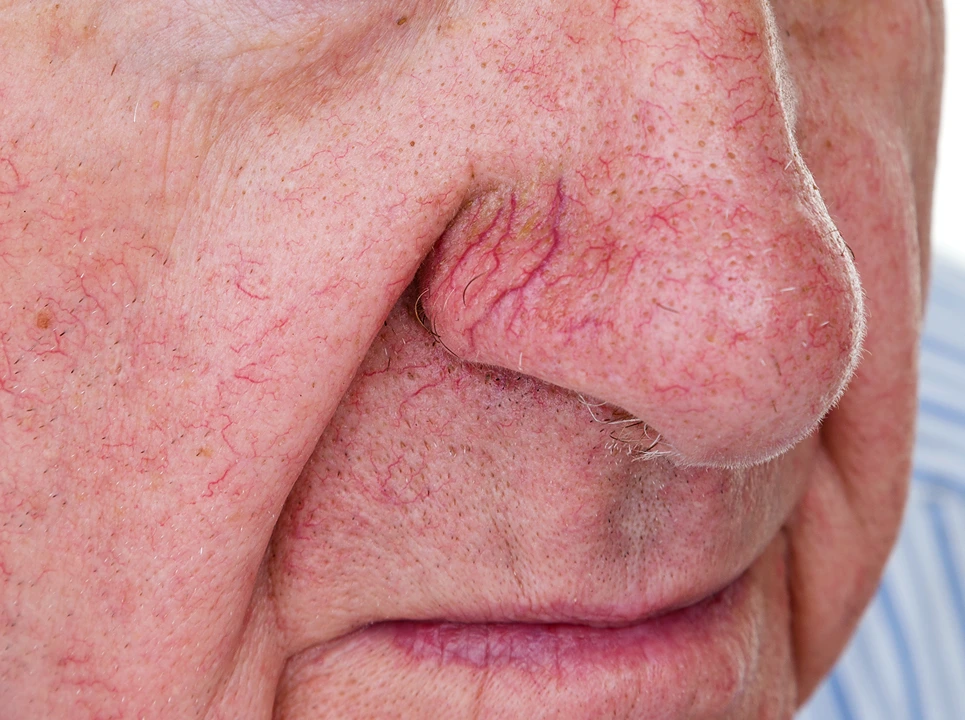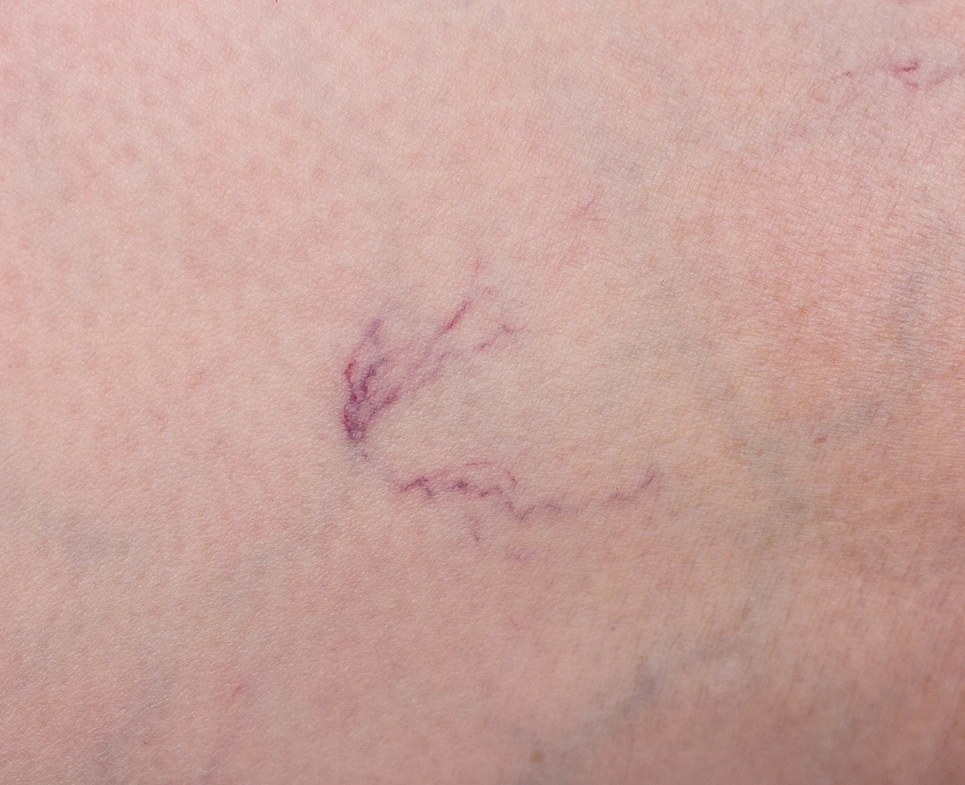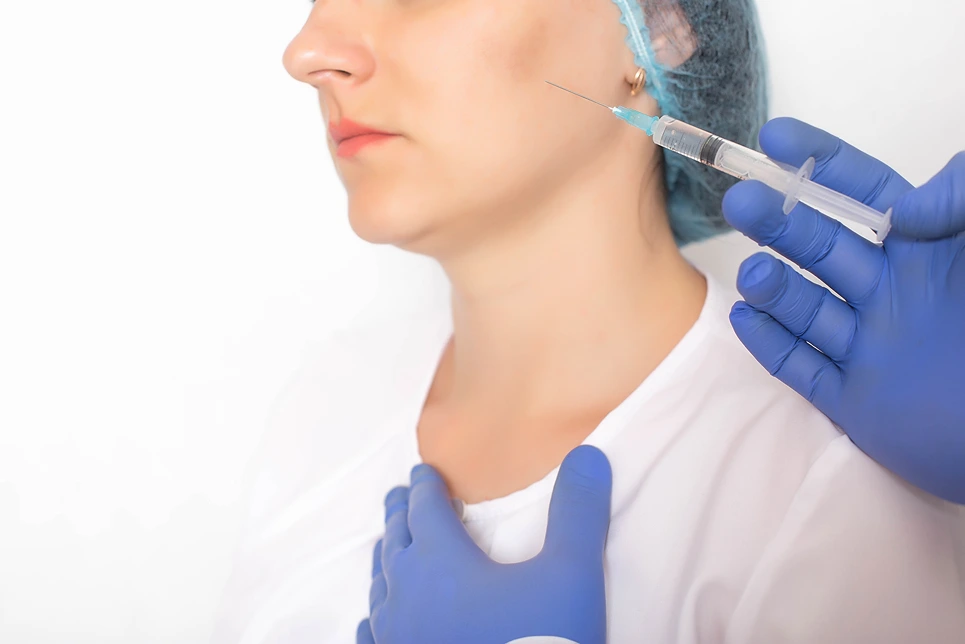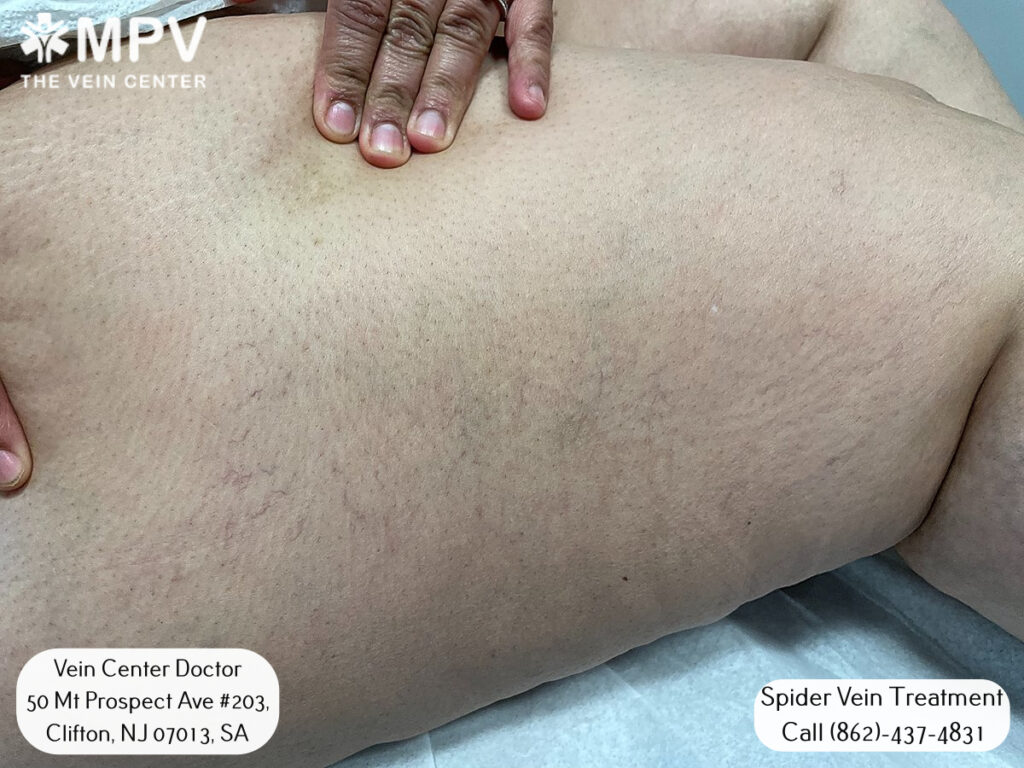Have you noticed those spidery, reddish-purple squiggly lines appearing on your face, especially around the nose and cheeks? Those are called facial thread veins or telangiectasia.
While they may seem like just an unsightly blemish, understanding what causes these visible capillaries can help prevent them from getting worse or developing new ones.

Thread veins appear as thin, winding reddish or purplish lines on the surface of your skin. They're often described as "spider veins" or "broken capillaries" because of their webby, branching appearance.
These dilated blood vessels commonly crop up on areas like:
While smaller thread veins may seem harmless, they can spread into larger clusters if not properly treated. This is why it's important to understand what causes them in the first place.
Living with unwanted veins is a thing of the past, when you can simply schedule a free consultation with Vein Center Doctor and find your ideal solution today.
It's easy to confuse thread veins with the redness and flushing of rosacea. However, rosacea is a chronic inflammatory skin condition, while thread veins are simply dilated surface capillaries.
That said, rosacea often leads to the development of thread veins over time due to the constant inflammation weakening the blood vessels. We'll explore that connection later.
The root causes of facial thread veins can be grouped into several categories: genetic factors, the effects of aging, environmental exposures, hormonal changes, lifestyle habits, and certain medical conditions. Let's take a deeper look at each.
For some people, the tendency to develop thread veins is simply in their genes. You may be more predisposed if you have a family history of:
If your mom always had those trademark reddish cheek lines, chances are you inherited the same vascular vulnerability. While you can't control your genes, being aware of your risk can motivate you to manage other preventable factors.
As we get older, the skin loses its supportive structural elements like collagen and elastin. This depletes the dermal layer, allowing the tiny blood vessels underneath to show through.
With the loss of this vascular support as skin becomes thinner and looser, those fragile capillaries have nothing to hold them in place. They become dilated and distended, rising to the surface as unsightly thread veins.
According to experts, the visible signs of aging like thread veins tend to accelerate after age 50 when collagen production slows dramatically. Taking steps to preserve your skin's elasticity can help minimize this issue.

You've likely heard how important it is to protect your skin from the sun's harmful UV rays which can cause wrinkles, age spots, and even skin cancer. But did you know this radiation directly damages capillary walls too?
UV light actually breaks down the collagen and elastin fibers surrounding those tiny blood vessels. With this supportive structure compromised, the capillaries become permanently dilated - resulting in the dreaded spidery veins.
Sun damage also contributes to "photoaging", meaning your skin biologically ages faster than it should. All of this accelerates the thinning process that leads to visible thread veins.
Using a daily broad-spectrum sunscreen can help prevent further UV damage and stop new thread veins from forming. Procedures like intense pulsed light (IPL) therapy may also help diminish existing sun-induced veins.
For both men and women, hormonal fluctuations are a major influence on facial thread veins developing at certain life stages.
Here's a breakdown of how hormones like estrogen, testosterone, and cortisol play a role:
| Target Group | Details |
| For Women | Estrogen helps regulate blood flow and vein dilation. Surges during puberty, oral contraceptive use, and pregnancy can all trigger thread veins. Perimenopause and menopause are especially prone times as estrogen production drops, impacting the strength of capillary walls. |
| For Men | While testosterone doesn't directly affect veins, its gradual decline with age can lead to a loss of vascular integrity and widened capillaries. |
| For Both Genders | High levels of the stress hormone cortisol have been linked to vascular inflammation, causing capillaries to become permanently distended. |
Managing hormonal imbalances through certain life stages is key to preventing sudden vein visibility issues.
The way you live and what you're exposed to in your environment are major contributors to those squiggly lines marring your complexion.
Key triggers include:
As you can see, making some lifestyle adjustments can go a long way towards minimizing causes of thread veins on your face.
In some cases, visible facial thread veins stem from an underlying physiological cause. Several disorders can make you prone by impacting circulation and weakening vascular structures:
As this chronic inflammatory condition progresses, the persistent flushing and redness taxes delicate capillary walls. This often leads to those telltale reddish-purple thread vein patterns.
Conditions like scleroderma, Raynaud's phenomenon, and vein malformations can directly affect blood vessels and lead to telangiectasia development.
Any type of facial trauma, radiation exposure, burns, or procedures can potentially damage capillaries in a localized area and worsen thread veins.
So if you've ruled out other causes yet the veins persist or worsen, it's a good idea to discuss any potential medical links with your dermatologist.

Not all thread veins require advanced intervention right away. But at a certain point, those spreading, darkening reddish lines become more than just a minor nuisance, especially on visible areas like the face.
Here are some signs it may be time to explore treatment options with a professional:
The good news is there are safe, effective removal options ranging from laser therapy to sclerotherapy injections that can clear away those unsightly facial thread veins.
Taking a proactive approach to minimize risk factors that cause thread veins is ideal. Some skin-protecting habits to start today:
While you can't necessarily avoid all causes like aging and hormones, adopting an overall lifestyle that promotes vascular health is your best defense.

Those reddish-purple lines traveling across your complexion may seem like just a minor nuisance now. But leaving them untreated often allows thread veins to progress into something more severe over time.
By understanding the numerous internal and external contributors like genetics, sun damage, lifestyle factors and more, you can take control. Follow preventative measures, adjust your habits, and speak to a skin care professional if veins persist.
Find exactly what you need to get rid of your vein-related problems. Dr. Sood and the rest of our team at Vein Center Doctor are ready to help: schedule your free consultation today.
Most Insurance is accepted for treatment